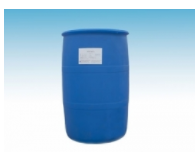Surface tension method: CMC is determined by the logarithmic figure of surface tension-concentration. Specific method: Measure the surface tension of a series of surfactant solutions with different concentration, make a gamma-lgc curve, and extend the linear part on both sides of the curve turning point. The concentration of intersection point is the CMC of surfactant in the system. 2) Conductivity method: When determining cmc, the square root of concentration can be plotted by conductivity to concentration or molar conductivity to concentration. The concentration of turning point is cmc. It is limited to the determination of CMC of ionic surfactants. 3) Dye method: first, a small amount of dye was added to the surfactant solution with a higher concentration (>cmc), and the dye was dissolved in micelles, showing a certain color. Then the solution was diluted with water by titration until the color changed significantly. At this time, the concentration of the solution was cmc. 4) Turbidity method: The concentration of the sudden change point of turbidity is CMC of surfactant when the turbidity of surfactant solution with appropriate amount of hydrocarbon is observed. 5) Photodispersive method: CMC can be determined by using the mutation point in the scattered light intensity-solution concentration curve.

The influence of surfactant type: under the same hydrophobic group, the CMC of ionic surfactant is larger than that of non-ionic surfactant, about two orders of magnitude difference.
2) The length of hydrocarbon chain: the critical micelle concentration of the same type of surfactants decreases with the increase of hydrophobic groups; the number of carbon atoms in the hydrocarbon chain of ionic surfactants ranges from 8 to 16, and the change of CMC with the number of carbon atoms shows a certain rule: for each additional carbon atom in the homologues, the CMC decreases by about half. Nonionic surfactants, CMC is more affected by the number of hydrophobic carbon atoms. In general, for every two additional carbon atoms, the CMC decreases to 1/10.
3) Branch of hydrocarbon chain: In surfactant molecular isomers with the same chemical composition, surface active agents with straight hydrocarbon chain have lower cmc, higher branching degree and higher cmc.
4) Location of polar groups: When the hydrocarbon chain is the same, the closer the polar group is to the middle position, the larger the CMC is.
5) The influence of other substituents in the hydrocarbon chain: when there are double bonds in the hydrocarbon chain, its CMC is higher than that of the saturated compounds. When there are phenyl in the hydrophobic chain, one phenyl is equivalent to about 3.5 CH2 groups.
6) Properties of hydrophobic chains: Surfactants containing carbon and fluorine chains have much lower CMC than hydrocarbon chain surfactants with the same number of carbon atoms, which correspondingly have much higher surface activity. The CMC of the surfactant whose hydrogen in the hydrocarbon chain is partially replaced by fluorine decreases with the increase of the degree of substitution.
7) Other factors: In addition to the chemical structure of surfactants, additives (such as inorganic salts, polar organic compounds) have an impact on the CMC of surfactants; temperature also has an impact on cmc.
In the cable disc, the appearance of the socket, the material used in the panel, the number of sockets and so on all determine the quality of the whole disc, as well as the use effect, but it is the copper sheet inside the socket that really determines the power-on situation and plays a role. Elastic copper sheet with good quality and thicker texture is the best choice. Good socket copper sheet is the key part to avoid fire hazards.
Some inferior points on the market are broken. Most of the copper sheets are ordinary brass, whose thickness is generally below 0.4mm, and the surface of the copper sheets has not been treated safely. It is easy to be oxidized and corroded, heat distortion and poor toughness in long-term use, resulting in poor contact between plugs and sockets. When power is on, it needs to be plugged repeatedly to ensure that the contact is in place, and loosening may occur after plugging, which will affect the normal use of electricity.
Phosphorus bronze is used in high-quality cable tray. Its thickness can reach 0.5 mm. The surface of copper sheet is also treated by nickel plating. It has strong elasticity, excellent corrosion resistance and oxidation resistance, good thermal conductivity, and is not easy to loosen, which reduces the possibility of fire.
In addition, for sockets, in addition to the material of copper sheet, the thickness of copper sheet is also an important consideration. Thicker pure copper sockets have the following advantages: strong toughness and durability, not easy to deform; suitable for long-term multiple plugging, socket and socket contact is good, close connection; thick copper, can improve the current through capacity, reduce the resistance of copper parts; thick copper parts, anti-oxidation, rust-free, not easy because of copper parts. Corrosion increases resistance and heat. It can be said that a good socket, the decisive role is the quality of the socket.
At the same time, the material of socket panel is also an important link to determine the service life of cable disk, because sockets need to be used for a long time. Under the condition of frequent power-on, high temperature will cause the inferior panel to melt, affecting the normal use of cable disk.